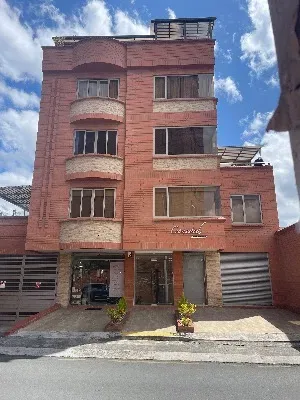Ecuador’s football stars hone their skills on the hard-packed beaches of Esmeraldas
By Jim Wyss
Residents of the sweltering port town of Esmeraldas like to boast that at least twice a day they have the best soccer pitch in the country: the beach at low-tide.
On a recent weekday, as dozens of young men sprinted back and forth along the hard-packed sand, Manuel Hurtado, a regular at the games, said Esmeralda’s beaches are Ecuador’s World Cup secret weapon.

Playing football on the beach in Esmeraldas.
“Everything is harder to do in the sand,” he said. “It’s harder to control the ball, harder to pass. Every time you take a step it’s like taking 10.” For men who cut their teeth here, a regulation soccer field is a cakewalk, he said.
He may have a point. For years, this far-flung province nestled in the northeast along the border with Colombia, has produced the lion’s share of Ecuador’s soccer talent. With a population of 531,000, Esmeraldas only accounts for 3 percent of the population. But Esmeraldeños hold 11 of the 23 spots on Ecuador’s national team — and that doesn’t include team captain Antonio Valencia, who was born in the Amazon but whose parents are from Esmeraldas.
The U.S. is getting a first-hand look at some of them in action in Copa America play, currently underway. Ecuador has played to draws with perennial powerhouse Brazil, as well as Brazil and appears poised to win in Saturday’s match with Haiti.
More important to most Ecuadorians, is the fact that the national team is in second place in qualifying play for the 2018 Moscow World Cup among South American teams.
La Tri, as the team is known, is a matter of national pride, but in Esmeraldas the players are often talked about like they were still neighborhood kids — skipping school to play pickup games.
Hurtado, a computer programmer, rattled off several members of the national team he’s gone toe-to-toe with on the beach of Las Palmas. Often, recruiters from other parts of Ecuador will scout the rowdy matches for fresh talent, he said.
Rafael Washington Erazo, 48, has turned his garage into a photo gallery for his son, Frickson, a defender on the national team. A onetime teacher and congressman, Erazo said it’s impossible to talk about Ecuadorian soccer without talking about race.
In a country where only 7 percent of the population is of African descent, Ecuador’s national soccer team is almost 80 percent black. And Esmeraldas is one of the few predominantly black provinces. By comparison, the majority mestizo capital of Quito, with a population of 2.7 million, doesn’t have a single player on the World Cup team.
“It all comes down to the fact that we’re black,” Erazo said. “Because we’re black, we have this culture of sport and athletic skills. This is where the best basketball players come from, the best weight lifters and soccer players. It’s all intimately linked to the color of our skin.”
Or as Omar Estupiñan, the head of Esmeraldas’ Soccer Association sees it, “The people here even have muscles in their fingernails.”
The region has not been as blessed economically as it is genetically. Despite being home to a major port and a refinery, 68 percent of Esmeraldeños live below the poverty level — far above the national average. Here, like in many parts of urban United States, sports are seen as one of the few ways out, Estupiñan said. Since April 16, residents have faced even tougher challenges, recovering an earthquake that devastated areas south of Esmeraldas.
Poverty looms large in Esmeralda’s local soccer scene. While the province has more than a dozen teams, most of them work on a shoestring budget. Even as Esmeraldeños fill the ranks of soccer leagues in other provinces and around the world, Esmeraldas has not managed to field its own Division 1 team since 2006.
John Cagua is the coach of the Club Deportivo Esmeraldas Petroleros, the local team that has the best chance of being bumped up to the premier league. As he watched his players practice in a muddy field at the local police station, he said most talented kids left the province in their teens to seek fortune and fame in the capital or the second-city of Guayaquil, where teams have their own complexes.
While the Petroleros pay their players between $500 and $1,000 a month, many local leagues treat their stars like gladiators, he said.
“It’s not uncommon for players to make $40 a game — but that’s if they win,” he said. “If they don’t win, they don’t get paid.”
The national government says Esmeraldas is an investment priority. The Rafael Correa administration has pumped more than $240 million into five elite athletic training centers around the country, including one in Rio Verde, about 40 minutes from the city of Esmeraldas. The sprawling complex has tracks, gyms, basketball courts and a pristine artificial soccer pitch. But local teams grouse that the added expense of transporting players to the center and feeding them makes it cost prohibitive.
Cagua, the coach, said he suspects the rest of the country wants to keep Esmeraldas’ soccer under its heel. Other provinces have money but no talent, he said.
“For them, it’s beneficial that we don’t have [well-funded] soccer teams,” he said. “That way, they can steal players from us without having to pay us for them.”
Like many nations in Latin America, Ecuador is obsessive about its soccer — sometimes to the extreme. In 2001, coach Hernán “El Bolillo” Gómez was shot in the leg after he refused to put the son of former President Abdalá Bucaram on the national junior team.
Passions here also seem to be amplified by the insecurity of being a regional late bloomer. While neighboring Peru qualified for its first World Cup in 1930 and Colombia had its debut in 1968, Ecuador didn’t make the cut until 2002. Ecuador is looking to qualify for only the fourth time in the battle for a spot in the 2018 Moscow World Cup.
Cagua said he dreams of a time when the Petroleros might have their own stadium with three fields to practice on and a roster of 300 trainees working their way up through the ranks. Success in Esmeraldas could make the entire country a formidable World Cup contender, he said.
“When you drive across Europe, you see a soccer pitch every two kilometers. Here, every 50 kilometers we have a cow pasture,” he said. “But despite everything, we are still producing some of the best.”


















